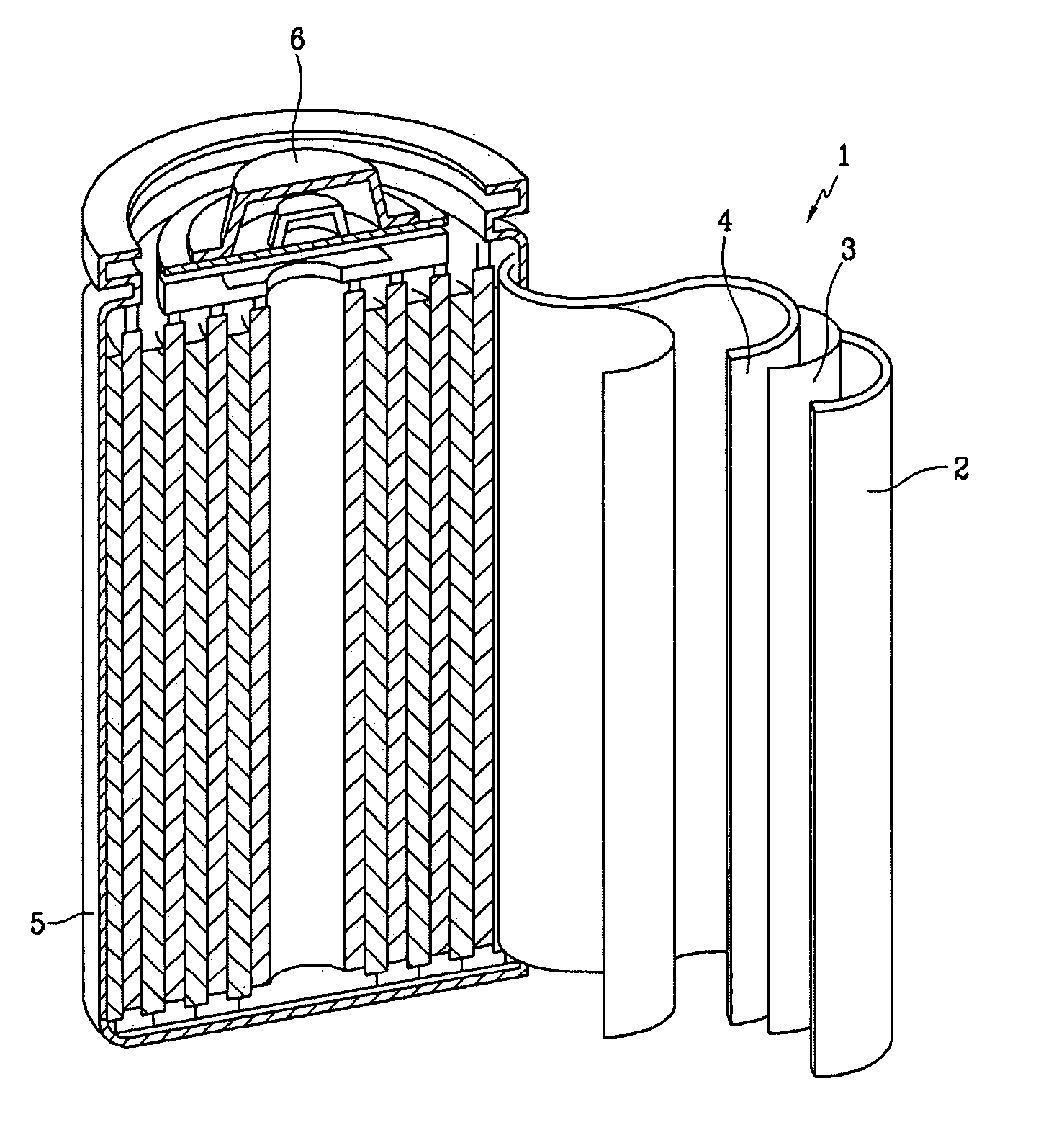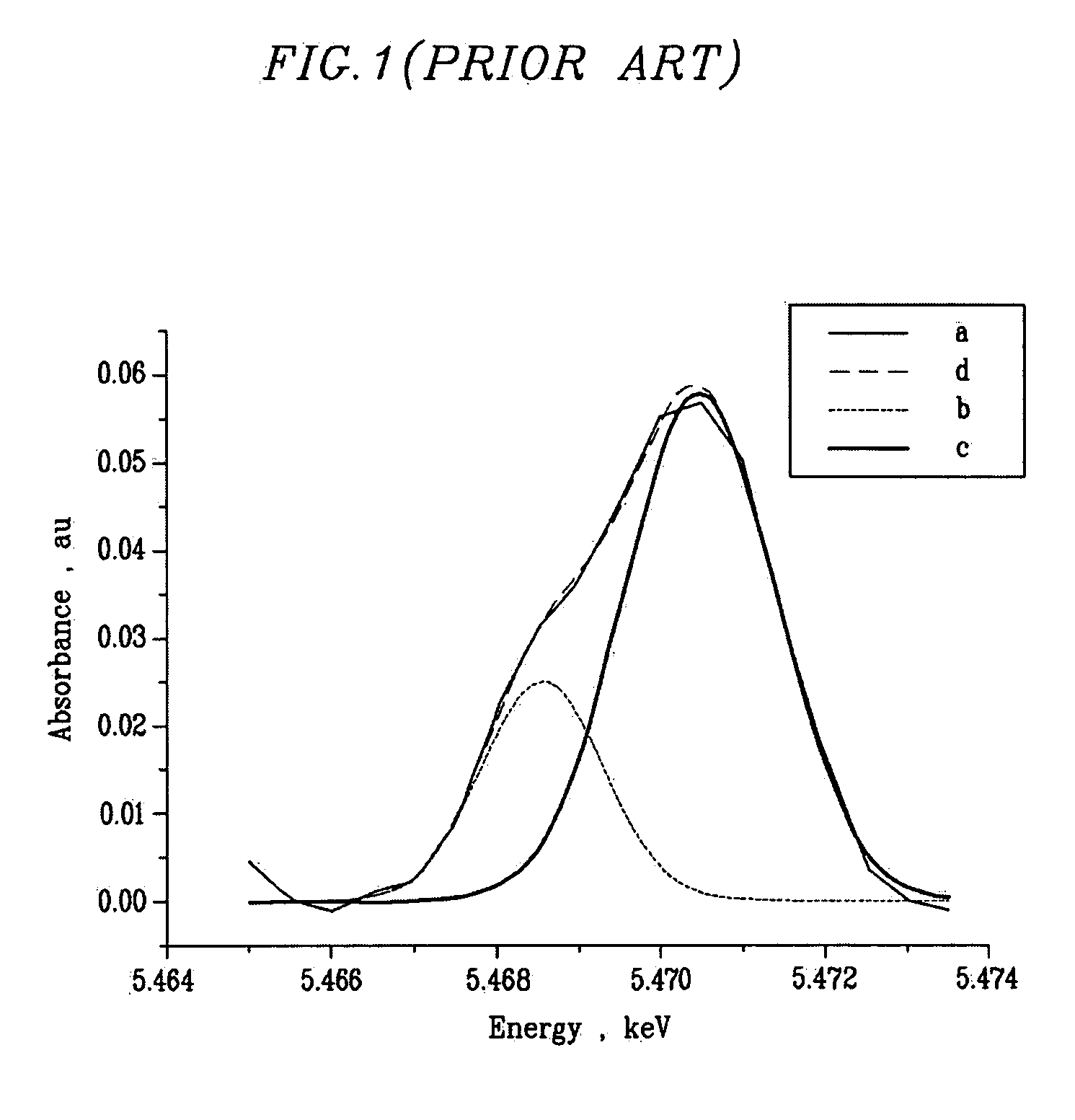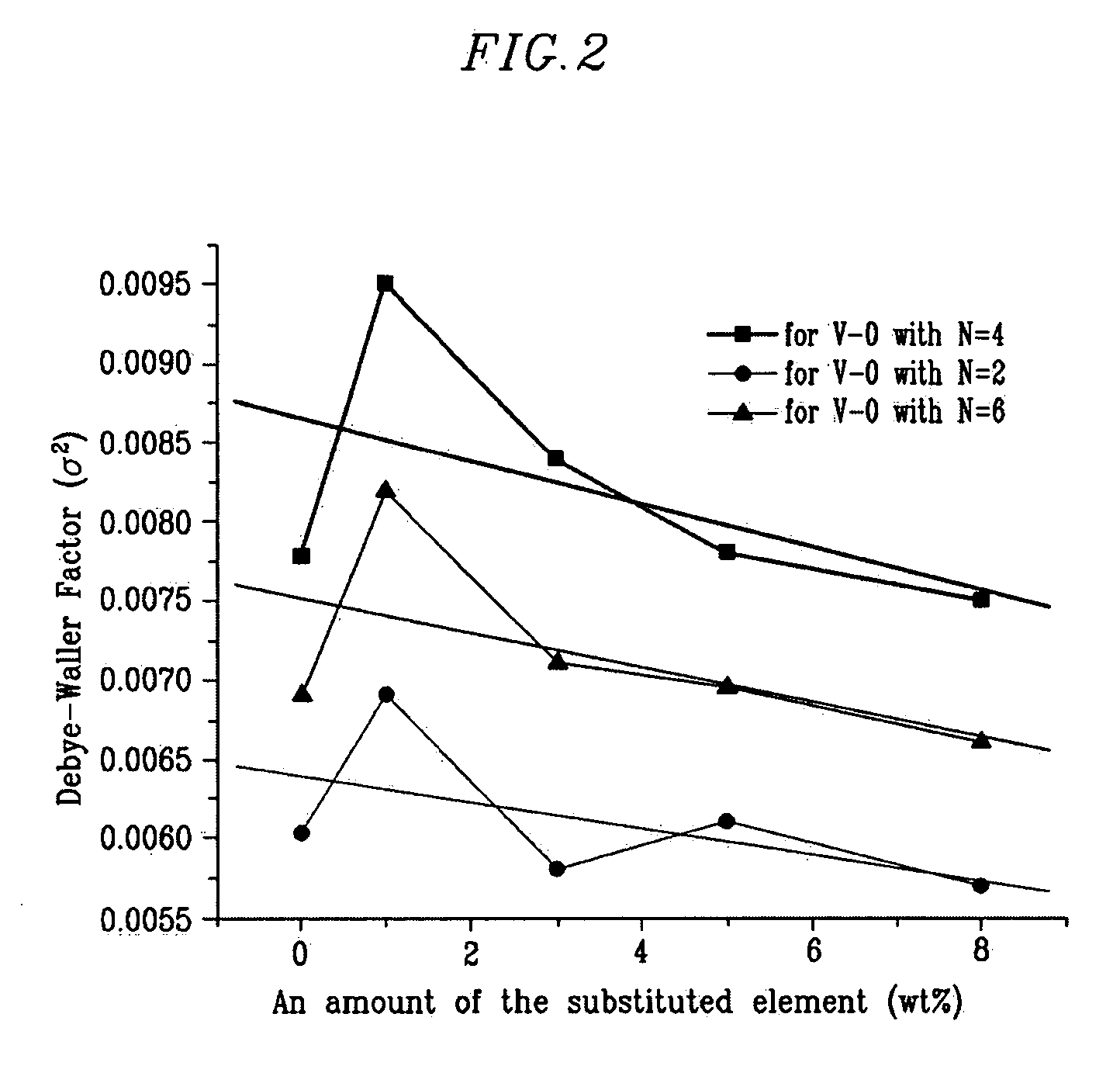Negative active material for non-aqueous electrolyte battery, method of preparing same and non-aqueous electrolyte battery
- Summary
- Abstract
- Description
- Claims
- Application Information
AI Technical Summary
Benefits of technology
Problems solved by technology
Method used
Image
Examples
example 1
[0058] Li2CO3, V2O3 and TiO2 were mixed in a Li:V:Ti mole ratio of 1.1:0.89:0.01 in solid phase. The mixture was heat-treated at a temperature of 1100° C. under a nitrogen atmosphere to prepare a negative active material, Li1.1V0.89Ti0.01O2. The prepared negative active material showed an R-3M crystalline structure in single-phase diffraction pattern.
[0059] 80 wt % of the prepared negative active material, 10 wt % of a graphite conductive agent and 10 wt % of a polyvinylidene fluoride (PVDF) binder were mixed in N-methylpyrrolidone (NMP) to prepare a negative active material slurry. The slurry was coated on a copper current collector to fabricate a negative electrode. The density of active mass was 2.4 g / cc. The active mass is the mixture of active material, conductive agent, and binder formed on the current collector.
[0060] The negative electrode showed a high initial reversible capacity of 800 mAh / cc and good cycle life characteristics in a charge-discharge experiment.
example 2
[0061] A negative active material and a negative electrode were prepared by the same method as in Example 1, except that the Li:V:Ti mole ratio was changed to 1.1:0.87:0.03 to prepare a negative active material, Li1.1V0.87Ti0.03O2.
example 3
[0062] A negative active material and a negative electrode were prepared by the same method as in Example 1, except that the Li:V:Ti mole ratio was changed to 1.1:0.85:0.05 to prepare a negative active material, Li1.1V0.85Ti0.05O2.
PUM
 Login to View More
Login to View More Abstract
Description
Claims
Application Information
 Login to View More
Login to View More - R&D
- Intellectual Property
- Life Sciences
- Materials
- Tech Scout
- Unparalleled Data Quality
- Higher Quality Content
- 60% Fewer Hallucinations
Browse by: Latest US Patents, China's latest patents, Technical Efficacy Thesaurus, Application Domain, Technology Topic, Popular Technical Reports.
© 2025 PatSnap. All rights reserved.Legal|Privacy policy|Modern Slavery Act Transparency Statement|Sitemap|About US| Contact US: help@patsnap.com



